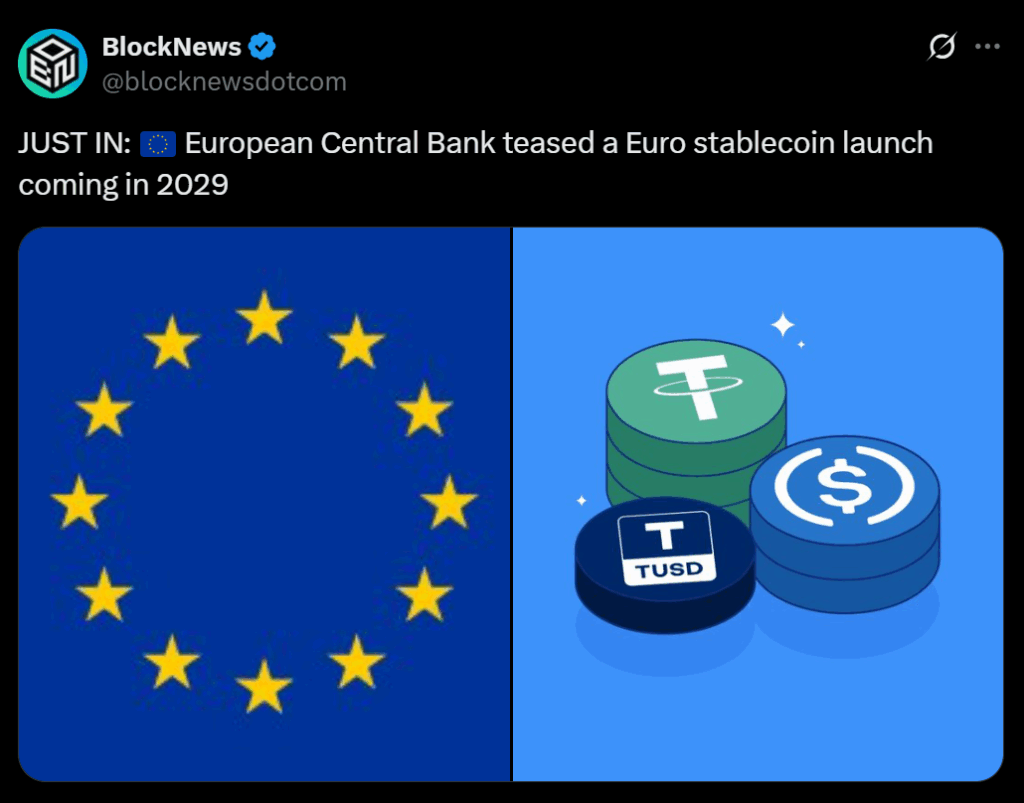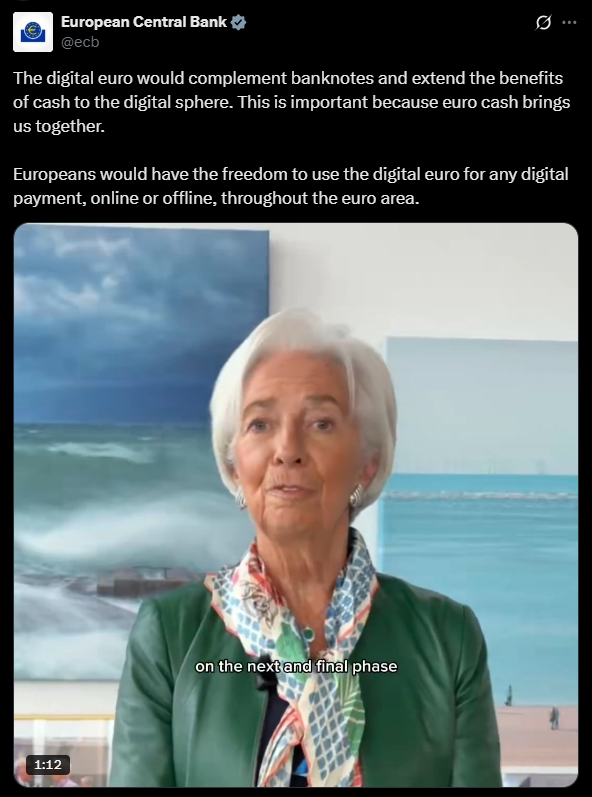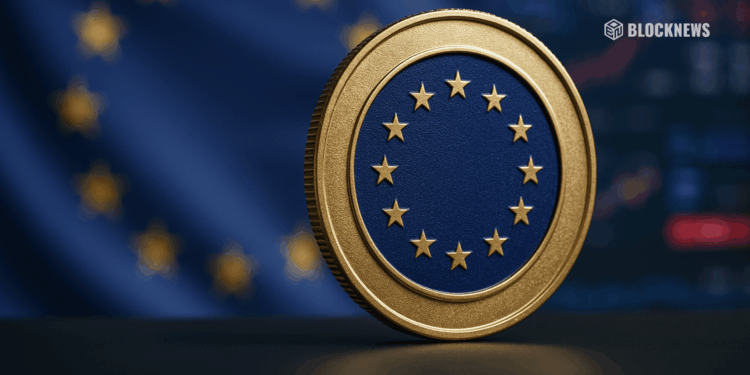• The ECB will continue digital euro development, targeting a 2029 launch.
• Political disputes over privacy, holding limits, and banking risks persist.
• Lagarde pushes for progress to counter U.S. payment dominance and stablecoin influence.
The European Central Bank (ECB) is moving ahead with its digital euro project, even as the current preparatory phase concludes this month. During a meeting in Florence, Italy, officials confirmed plans to continue building toward a potential launch in 2029, assuming the EU finalizes the necessary legal framework.
According to ECB Executive Board member Piero Cipollone, the bank would need roughly 2.5 to 3 years to implement the project following legislative approval. The goal is to introduce a digital version of cash that can complement existing payment systems while preserving financial stability within the eurozone.

Political and Technical Hurdles Persist
While the ECB has made progress on the technical side, EU lawmakers remain divided on critical aspects of the project. Issues such as holding limits, privacy protections, and banking-sector impact continue to slow discussions. ECB simulations show that if holding limits are set too high, as much as €700 billion could move from bank deposits into digital wallets, potentially destabilizing commercial banks.
Finance ministers have agreed on a general roadmap for the digital euro, but disagreements between member states—especially over costs and potential risks—have created political gridlock. Analysts point to the European People’s Party as a key obstacle, with some of its members preferring private-sector payment alternatives over a state-backed digital euro.
Strategic Independence and U.S. Influence
The ECB’s leadership, including President Christine Lagarde, has urged swift progress to reduce Europe’s dependence on U.S. payment providers like PayPal, Mastercard, and Visa. Officials are increasingly concerned about dollar-backed stablecoins—particularly those linked to U.S. President Donald Trump’s policies—gaining traction in European markets.
Lagarde and other top figures are expected to address the issue in Thursday’s official communication, emphasizing the strategic importance of a European digital currency that safeguards monetary sovereignty.

Focus on Wholesale Digital Euro and DLT Integration
Even as the retail-focused digital euro faces political delays, the ECB is ramping up work on a wholesale central bank digital currency (CBDC). In July 2025, it approved a plan allowing distributed ledger technology (DLT) transactions to be settled with central bank money — a step toward integrating blockchain systems into Europe’s financial infrastructure.
Cipollone expressed optimism that talks among EU member states are improving and hinted that the European Parliament’s position could be finalized by May 2026, paving the way for a consensus by the end of next year.
If timelines hold, the digital euro could officially debut in mid-2029, marking one of the most ambitious transformations in Europe’s monetary history.














